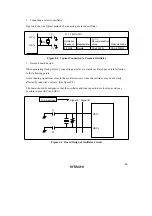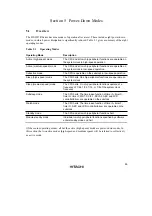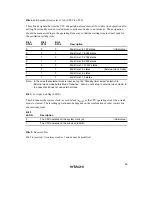
103
5.2.2
Clearing Sleep Mode
Sleep mode is cleared by any interrupt (timer A, timer C, timer F, timer G, asynchronous counter,
IRQ
4
to IRQ
0
, WKP
7
to WKP
0
, SCI3-1, SCI3-2, A/D converter, or), or by input at the
RES
pin.
• Clearing by interrupt
When an interrupt is requested, sleep mode is cleared and interrupt exception handling starts. A
transition is made from sleep (high-speed) mode to active (high-speed) mode, or from sleep
(medium-speed) mode to active (medium-speed) mode. Sleep mode is not cleared if the I bit of the
condition code register (CCR) is set to 1 or the particular interrupt is disabled in the interrupt
enable register.
Interrupt signal and system clock are mutually asynchronous. Synchronization error time in a
maximum is 2/ø (s).
• Clearing by
RES
input
When the
RES
pin goes low, the CPU goes into the reset state and sleep mode is cleared.
5.2.3
Clock Frequency in Sleep (Medium-Speed) Mode
Operation in sleep (medium-speed) mode is clocked at the frequency designated by the MA1 and
MA0 bits in SYSCR1.
5.3
Standby Mode
5.3.1
Transition to Standby Mode
The system goes from active mode to standby mode when a SLEEP instruction is executed while
the SSBY bit in SYSCR1 is set to 1, the LSON bit in SYSCR1 is cleared to 0, and bit TMA3 in
TMA is cleared to 0. In standby mode the clock pulse generator stops, so the CPU and on-chip
peripheral modules stop functioning, but as long as the rated voltage is supplied, the contents of
CPU registers, on-chip RAM, and some on-chip peripheral module registers are retained. On-chip
RAM contents will be further retained down to a minimum RAM data retention voltage. The I/O
ports go to the high-impedance state.
















































